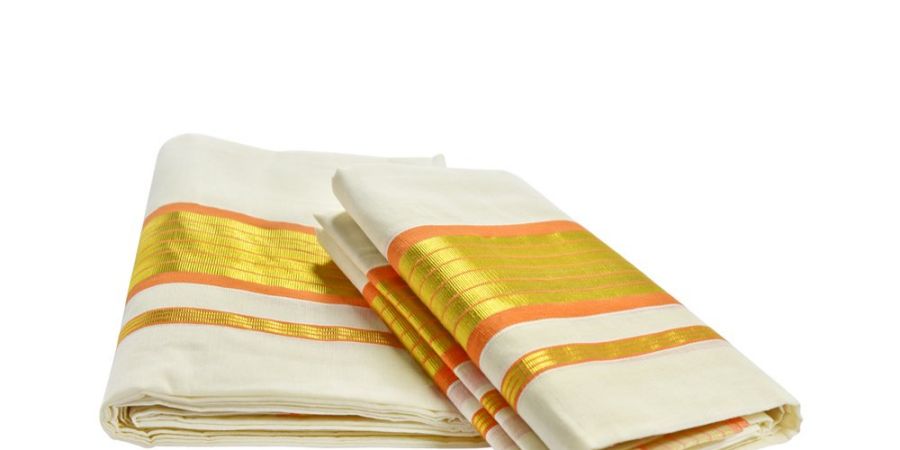

Hello everyone, hope all are doing well. Today's topic is , the traditional dress of Kerala that is “SET MUND” , one of my favourite…
Mundum neriyatum (In Malayalam)is the customary clothing of ladies in Kerala, a state in southwestern India. It is the most seasoned remainder of the antiquated type of the sari which covered just the lower part of the body.
Kasavu - mundu, or Set-mundu likewise called Mundum Neriyathum is the conventional clothing for ladies and got from the possibility of Sattika or Sari from the Pali age. Neriyathum was a lengthy type of Saree displayed in Buddhist and Jain writing called 'Sattika', while Mundu was alluded to as "Antariya."
However the ladies of Kerala by and large wear saris, the conventional dress is a two-piece set known as the mundum neriyathum. The mundu is an unstitched piece of fabric that is worn around the midriff. The neriyathu is worn corner to corner from the left shoulder and one end is wrapped up at the midriff.
Mundu (plural mundus) A piece of clothing looking like a dhoti, worn around the midsection in Kerala, the Tulunadu district, and Maldives.
Step by step instructions to wear mundu
Hold a mundu open with two hands.
Take the end on the right-hand side and put it to your waistline. Rehash with the end on your left-hand side.
Ensure the kara falls so that the covering is apparent till your middle.
How is mundu made?
A khadaṟ muṇṭŭ is made utilizing handlooms. When unbleached, the mundu is called nēriyatu. In present day times, two sorts of mundu are common — the single and the twofold. A solitary mundu is wrapped just a single time around the midsection, while the twofold one is collapsed in half prior to wearing.
What works out in a good way for mundu?
Pick a mundu with unobtrusive or impartial hued kara and you can coordinate this with a shirt or Kurta in a dull shade (like dim, dark, naval force blue, dim olive green, dim brown and so forth) and in a perfect world has a mandarin neckline.
It can best be depicted as a gender neutral ensemble that is worn on the lower part of the body and covers an individual from the midsection to the foot. It is normally white in variety and worn by all kinds of people, particularly during conventional services and celebrations.
The mundum neriyatum is generally white or cream in variety and comprises of two bits of material that have a shaded stripe at the boundary known as the "kara." The piece of fabric that wraps the lower piece of clothing is known as the mundu. It is worn underneath the navel and around the hips, like the mundu worn by men in Kerala. The piece of fabric that is worn as the upper article of clothing is known as the neriyatu. One finish of the neriyatu is tucked inside the pavada or underskirt, and the excess long end is worn across the front middle. The neriyatu is worn over a shirt that arrives at very over the bosom bone. It is worn corner to corner from along the right hips to the left shoulder and across the midsection, halfway uncovering it. The excess remaining detail of the neriyatu is left dangling from the left shoulder, looking like the 'nivi sari'. Today, the 'nivi wrap', is the most well-known type of the sari. [10] A mundum neriyatum is treated prior to being hung and is worn over a shirt that matches the shade of the line, or kara.
